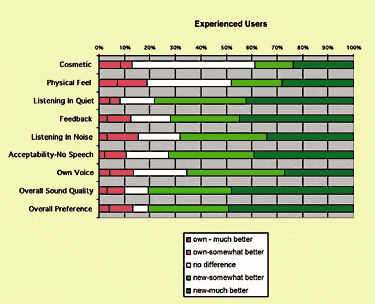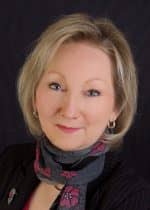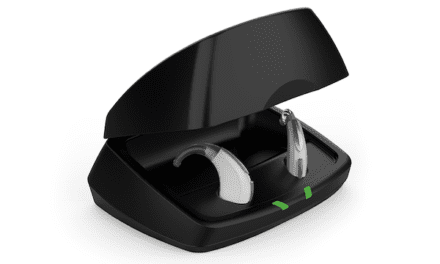From a regulatory perspective, the world of hearing conservation has seen little change in the last 30 years. While ostensibly relying on workplace noise control and engineering, real-world protection from workplace noise has been provided by a regimen of noise exposure monitoring, industrial audiometry, hearing protective devices (HPD), worker training, and maintenance of records.
Each of these components of the hearing conservation program (HCP) is described in the US OSHA Hearing Conservation Amendment (HCA).1 The net effect of the federal regulation is somewhat disheartening: After 30-plus years of federal rule, about 30 million US workers (1 in 5) work in environments that pose a risk to their hearing,2 and about one-third of the hearing losses in the US today are due, at least in part, to exposure to hazardous noise.3
The good news is that, even though the federal regulations covering noise in the workplace have been static, new technologies and approaches have been developed outside the regulatory process to improve HCP performance and better protect workers from the effects of noise. Management of audiometric data and HPD are areas where new developments can greatly improve HCP effectiveness and truly provide hearing loss prevention.
Hearing Testing
Establishing STS. The HCA describes and defines the industrial audiogram. Pure-tone air conduction hearing thresholds are tested at 500 Hz, 1 kHz, 2 kHz, 3 kHz, 4 kHz, and 6 kHz test frequencies early in the noise exposure of each individual. Annual tests are then compared to this “baseline” to test for change, with the sentinel event defined as the standard threshold shift (STS), an average change of 10 dB at 2 kHz, 3 kHz, and 4 kHz. An STS finding requires specific follow-up, including notification of the worker in writing, refitting the worker with HPDs, and retraining. Confirmation of STS allows the professional responsible for the HCP to revise the baseline test, using the most recent test for future comparisons so as not to detect the same STS in each subsequent year’s testing.
If STS is the sentinel event, it is essential that it be accurately and appropriately diagnosed. In many cases, given the volume of hearing screenings provided in industry, test artifact may be a factor. Earphone placement, worker attentiveness, and other factors may result in tests reflecting STS that is not truly present.
NIOSH recommendations. The US National Institute for Occupational Safety and Health (NIOSH) recommends immediate retesting4 as a tool to clear these spurious shifts from further consideration. If the most recent annual test is compared to baseline on the spot and potential STS is detected, the worker can be provided an immediate retest. Earphones are refit and the worker is reinstructed as to the importance of the test and how to respond to test tones. Empirically, NIOSH indicates that the immediate retest process can clear as many as half or more of the initial STS findings from further consideration and follow-up, with the second test (the immediate retest) serving as the annual test of record for HCP application.
Using frequency-averaged criteria that includes 2 kHz signals to assess noise damage may result in delaying the diagnosis of noise-induced hearing loss (NIHL), according to NIOSH. Their most recent Criteria Document5 recommends an alternative definition of hearing change that should merit follow-up. NIOSH recommends a “15-dB twice” criterion, where a 15 dB change from the baseline test at any frequency, confirmed on a subsequent test, is used to identify individuals who may be susceptible to the effects of noise. While application of this more sensitive criterion will likely identify more people for follow-up and intervention, it may make the industrial audiogram a better tool to help diagnose and prevent debilitating hearing loss.
Alternative analysis may be applied to the industrial audiometric database. The HCA permits application of presbycusis “corrections” to ensure that the aging component of hearing loss in the workforce is not attributed to noise exposure. Cook6 describes an evaluation methodology where baseline and most-recent audiograms are compared both with and without age correction. While STS in the non-age-corrected database is not a compliance event, it may be sensitive enough to identify susceptible workers before the combination of noise exposure and age effect result in OSHA STS.
Diagnosis of NIHL has proven problematic in some situations, as presbycusis and noise present in similar configurations on the industrial audiogram. Dobie & Rabinowitz7 have developed an interesting analysis that may help. Their analysis requires testing hearing thresholds at 8 kHz in addition to the six frequencies required under OSHA, and comparison of the mean thresholds at 1 kHz and 8 kHz (PTA18) to the mean thresholds at 2 kHz, 3 kHz, and 4 kHz (known as “PTA234”). If PTA234 exceeds PTA18 (a positive “notch index”), they suggest a noise component; if PTA234 minus PTA18 is negative, they indicate that the test likely does not reflect noise damage. This effect can be demonstrated graphically by plotting thresholds on a standard audiogram and drawing a straight line between the 1 kHz and 8 kHz thresholds (Figure 1). If most of the intervening thresholds fall below the line, the Notch Index indicates a noise relationship (Figure 1); if they fall above, the noise relationship is discounted (Figure 2). While not definitive, this approach can help guide the hearing conservation professional in diagnosis of NIHL.
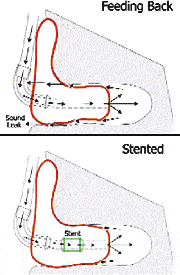
FIGURE 1. Using the Notch Index developed by Dobie & Rabinowitz,7 one draws a line (shown here in green) between the 1 kHz and 8 kHz thresholds. If the intervening thresholds fall below the line (as above), it is suggested that there is a noise-related component.
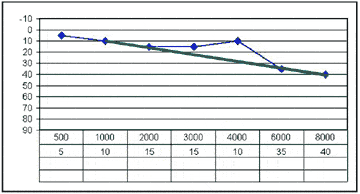
FIGURE 2. In this case, the intervening points between 1 kHz and 8 kHz fall above the line, so the noise relationship is discounted.
Using ANSI as a tool for understanding variability. The local industrial audiometric database in aggregate can be useful in assessing HCP effectiveness. The American National Standards Institute (ANSI) provides a couple of useful tools in this regard.
ANSI S12.13 TR-2002 is a technical report that provides techniques for viewing audiometric variability within an HCP as a surrogate for HCP effectiveness, with the general view that undue variability in hearing thresholds indicates failure in the audiometric data collection, noise control, or hearing protection aspects of the HCP. ANSI S3.44-1996(R2001) reflects a different approach by defining at the 10th, 50th, and 90th percentiles the hearing thresholds anticipated in a population with given noise exposures, ages, and durations of exposure. Comparison of hearing thresholds for groups within an industrial HCP to this standard can indicate whether local populations may be showing more or less hearing loss than the standard indicates, and thus reflect the overall effectiveness of the HCP in preventing hearing loss. Noise, hearing, and acoustics-related ANSI standards are available from the Acoustical Society of America at www.asa.aip.org (click on “Standards Store” for price and delivery details).
Hearing Protectors and Their Ratings
The first line of defense against noise in the workplace is noise control and reduction. If the hazard can be sufficiently mitigated or eliminated, the rest of the program may be unnecessary. For better or worse, however, OSHA decided in the early 1980s to permit the substitution of HPD and hearing testing for noise control—functionally making the HPD the only protection from noise available to many workers in the United States today.
This approach brings with it a range of problems. Most HPD on the market today do not deliver the amount of protection promised on the package. A review of studies published by Berger8 indicates that, while the mean laboratory attenuation of the protectors studied was about 23 dB, they yielded a mean of 8 dB actual protection in field conditions (Figure 3).
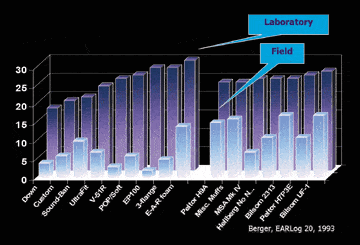
FIGURE 3. Comparison of NRRs published in North America (labeled values based on laboratory tests) to real-world field attenuation results derived for 22 separate studies. Adapted from Berger 1999.8
To address this issue, OSHA and NIOSH have taken different approaches to discounting or derating laboratory attenuation values to better align them with field performance:
• OSHA indicates that, when using HPD in lieu of noise control measures, “credit” will be given for the labeled noise reduction rating (NRR), minus 7 dB to correct for spectral uncertainty, then half of the remainder. Thus, an HPD with a nominal NRR of 31 yields a value of 12 dB (ie, [31-7]/2).
• The NIOSH derating system is a bit more complex, with different types of HPD given differing discounts. Earmuffs are given “credit” for 75% of their rated value; formable or foam earplugs with 50%; and all others 30%. Help with using the NIOSH system is available in their online Hearing Protector Compendium at www.cdc.gov/niosh/topics/noise/hpcomp.html, which also helps select HPD appropriate for given noise exposures.
This discounting approach has forced HPD manufacturers to seek ever-higher NRR values for their products. Unfortunately, some of these values have sometimes come at the cost of the two aspects of HPD design that are most critical: comfort and communication. Various manufacturers have taken innovative approaches to address some of these critical barriers to effective HPD use.
Sonomax Hearing Healthcare Inc (www.sonomax.com) has developed a system that includes an instant-delivery, custom-fit earplug, addressing comfort and fit issues. Each HPD is also individually field tested for performance with the predicted personal attenuation rating (P-PAR) taking the place of the statistically-derived population-based NRR. Attenuation on these devices is adjustable to match the noise exposure of the individual worker to avoid overprotection.
Electronic hearing protection can be a benefit, as well. Sound restoration earmuffs like the Tactical 7 from Peltor (www.peltor.com/peltor.com) or the 727 from Bilsom (www.bilsom.com) incorporate microphones on the outside of the earmuff designed to pick up sound from the environment. That sound is then electronically processed to keep it loud enough to maintain the individual’s auditory connection to the outside world, but not so loud as to pose a risk to hearing. These devices are particularly useful for workers with hearing-critical jobs, and those with some hearing loss who are required to use HPD. They tend to be a bit bulky and sometimes heavy, but can serve as a useful tool when dealing with hearing-critical jobs or hearing-impaired workers.
NIOSH indicates that about 90% of industrial noise exposures in the US are 95 dB or less, meaning that HPD should provide no more than about 10-15 dB of protection against noise. Ideally, that protection would have a flat frequency response—that is, the environment would sound about the same, only quieter, when using HPD. Some manufacturers have designed products to meet these needs, including the E-A-R UltraTech (www.e-a-r.com). These devices are appropriate for environments with moderate noise exposure, and can be suitable for workers with hearing loss.
Ergonomics is another key to effective HPD use. With an aging workforce, some workers have difficulty preparing a foam earplug for insertion by rolling it into a small enough cylinder to easily slip into the ear, let alone reaching over the top of the head to pull the pinna to straighten the ear canal in preparation for insertion. Many manufacturers are now producing HPD with insertion aids like handles or grips that permit the worker to achieve an acoustic seal without first preparing the HPD for insertion.
HPD purchasing and sourcing decisions cannot be left to purchasing agents. The highest NRR with the lowest cost will not meet the needs of today’s workforce. Careful selection of HPD appropriate for the noise environment with consideration of the needs of individuals is critical to effective hearing loss prevention.
Accommodation for Hard of Hearing Workers
Dealing with the noise-exposed worker with hearing loss can be challenging. A few simple tips can help protect the residual hearing the worker retains while permitting them to use their ears to communicate on the job.
Help in accommodating the hearing-impaired worker is available from OSHA. A recent Safety & Health Information Bulletin (SHIB)9 describes how warning signals and evacuation plans can be modified to address the needs of hearing-impaired individuals, and describes how hearing aids in the workplace can best be managed. A pending SHIB will address the role of HPD selection for the hearing impaired.
Additionally, the US Department of Labor Office of Disability Policy Technical Assistance Programs maintains a Job Accommodations Network Web site (www.jan.wvu.edu/cgi-win/OrgQuery .exe?Sol541) that offers resources to assist employers in locating technologies to accommodate workers with disabilities of all descriptions. For other examples, see the sidebar “Safety and Hearing Impaired Workers” on p 53.
| Safety and Hearing-Impaired Workers |
| Many alerting device options are available for use in the workplace, depending on the particular needs of the hearing-impaired worker. However, not all of the devices listed below are appropriate for every hearing-impaired worker. Some of the devices are more appropriate for individuals with a severe-to-profound hearing loss, while others are appropriate for workers with a mild hearing impairment. The employer should work together with hearing-impaired employees—along with an audiologist who specializes in hearing conservation—in determining the device or combination of devices that work best for their particular situation.
Some alerting device options include:
|
In the interim, floor supervisors should be trained as to how to manage communication with hearing-impaired workers. Instructions should include directives for them to speak slowly and clearly, address the hearing impaired worker face-to-face, and keep hands away from the mouth to permit the worker to supplement verbal communication by reading lips. For a list of communication strategies on the job, see the sidebar “Tips for Assisting People with Hearing Impairments in the Workplace” on p 52.
| Tips for Assisting People with Hearing Impairments in the Workplace |
|
Doing Better
New technologies and advanced approaches can provide a significant benefit when working with noise-exposed and hearing-impaired workers. Compliance with OSHA standards will not necessarily prevent hearing loss; howeveer, taking the next step to proactive hearing loss prevention can keep the workforce safe and hearing-healthy.
| Lee D. Hager serves as a hearing loss prevention consultant for Sonomax Hearing Healthcare Inc, Montreal, Canada. |
Correspondence can be addressed to HR or Lee D. Hager, Sonomax Hearing Healthcare Inc, 248 Church St, Portland, MI 48875; email: [email protected].
References
1. OSHA Hearing Conservation Amendment. Code of Federal Regulations 29 CFR 1910.95; Washington DC: OSHA;1983.
2. Preventing Occupational Hearing Loss: A Practical Guide. Washington DC: Department of Health and Human Services (NIOSH) Publication No. 96-110, 1996
3. National Institute on Deafness and Other Communication Disorders (NIDCD). Noise induced hearing loss. Available at: www.nidcd.nih.gov/health/hearing/noise.asp#who. Bethesda, MD: NIDCD; September 2002.
4. National Institute for Occupational Safety and Health (NIOSH). Occupational noise and hearing conservation selected issues. Available at: www.cdc.gov/niosh/noise2a.html; April 8, 1996.
5. National Institute for Occupational Safety and Health (NIOSH). Criteria for a Recommended Standard: Occupational Hearing Loss; Washington DC: Department of Health and Human Services (NIOSH); Publication No. 98-126; 1998.
6. Cook G. Evaluating the quality of hearing conservation from hearing test results. Available at: www.workplacegroup.net/article-hearcons-prgm-qual.htm. Greensboro, NC: Workplace Group; 2005.
7. Rabinowitz PM, Dobie RA. Use of the audiometric configuration to determine whether hearing loss is noise-induced: Can "notch" criteria help? Spectrum. 2003;20(1):8-11.
8. Berger EH. So, how do you want your NRRs: Realistic or sunny-side up? The Hearing Review. 1999;6(9):68-72.
9. Occupational Safety & Health Administration (OSHA). Innovative workplace safety accommodations for hearing-impaired workers. Available at: http://www.osha.gov/dts/shib/ shib072205.html; Washington DC: US Department of Labor; July 2005.

